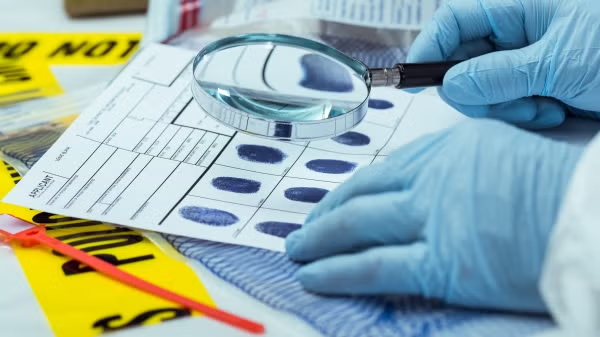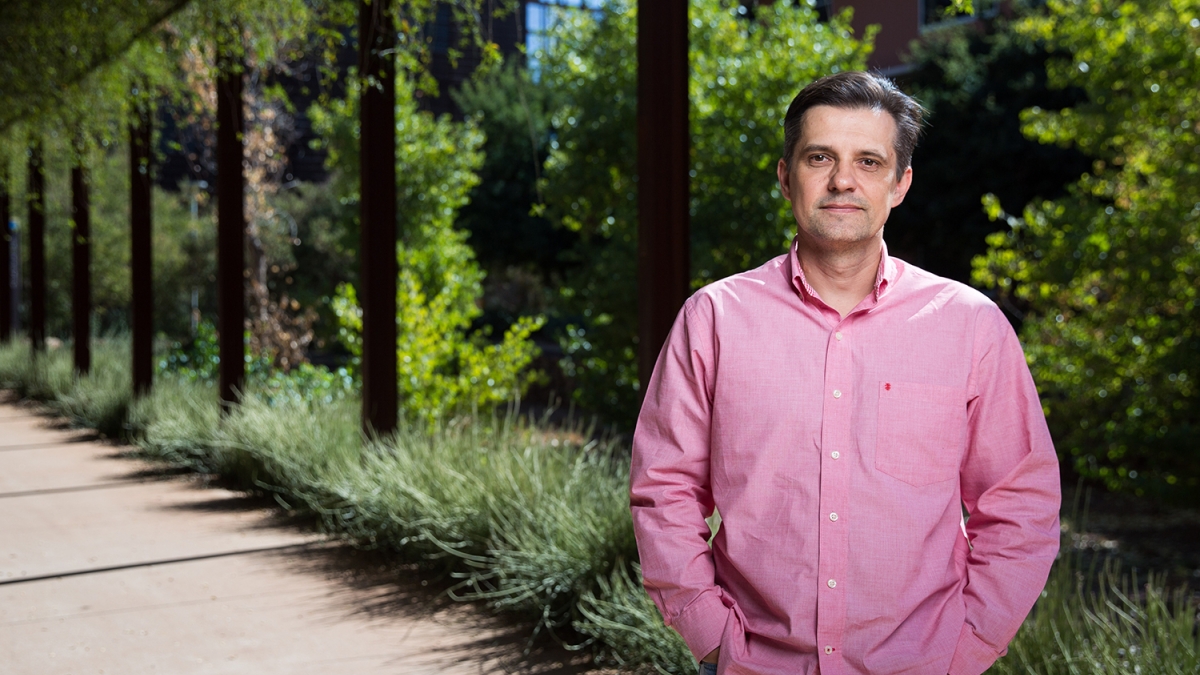Even though it may seem at first that the internet is an almost infinite source of knowledge, one needs to know how to properly navigate it in order to discern what’s truthful.
The web has generated lots of fake news on both sides of the political spectrum, conspiracy theories and pseudoscience.
Take for example the anti-vaccination movement, which erupted about five years ago thanks to group of celebrity “anti-vaxxers” who expressed concern on social media that certain shots could be harmful.
So how does one distinguish between exciting scientific breakthroughs and just plain baloney?
Arizona State University’s Maxim Sukharev is knowledgeable in debunking various pseudoscientific claims.
ASU Now spoke to Sukharev, a physics professor with the College of Integrative Arts and Sciences, about telling fact from fiction.
Question: Let’s start off with a good definition of what pseudoscience is.
Answer: Pseudoscience, quackery and junk science is everything but science: claiming things that never happen — telekinesis, ghost haunting, etc., pretending to use scientific language to misguide the public for personal gain, such as that infamous example of Airborne, which turned out to be just a primitive vitamin supplement and settled a $23.3 million class-action lawsuit for false advertisement. Fraud science is when actual scientists purposely misrepresent/fabricate data. Unfortunately, there are quite a few examples of that as well. The scientific community does fight such instances harshly but it takes obviously a significant amount of time to uncover fabrications.
Q: Has pseudoscience always been around?
A: There was time when there was no science at all. There was just pseudoscience all along: astrology, palm reading, etc. Slowly the scientific method emerged from the abyss of ignorance when people began to realize that the objective truth can only be understood through meticulous scientific scrutiny, which cannot be subjective.
Ancient Greeks were arguably the first ones who laid the very foundation of modern science. The scientific revolution brought us cures for many diseases we thought were God-sent and were lethal. Humans learned how to fly when the Wright brothers did something everyone thought was impossible. We now sit comfortably in an airplane moving over 500 mph and complain that the WiFi on board is too slow.
Science brought us deep understanding of very fabric of space-time, we are one step closer to uncovering the mysteries of the Big Bang and may be just a decade away from being able to cure cancer. Yet the pseudoscience is still alive and well. It feeds on our ignorance and natural desire for mystery and miracle. When scientists say that they cannot solve a given problem just yet, many turn to junk science simply because people do not understand that the scientific inquiry is a long and sometimes painful process. It does take time to cure cancer, it does take time to understand how to make a rocket fly. We will get there eventually and the junk science will disappear. Hopefully sooner than later.
Q: Why is pseudoscience so popular and why are people so willing to believe in it?
A: I wish I had an answer to that. Many scientists do. We would have jumped straight at the very cause of it trying to get rid of it once and for all. Personally, I think the best way to fight pseudoscience is to popularize science. Giving free open public lectures on various scientific issues including quantum mechanics and other fascinating subjects is the first step. Getting engaged with our local communities, high schools. Show students how impeccably fascinating real science is. Once exposed to that they will never turn to pseudoscience.
Q: Other than spreading misinformation, what are some other drawbacks about pseudoscience?
A: There are plenty of harmful examples, but this one stands out for me most: As scientists, not only do we have to be able to work on pressing scientific issues but also we must engage in fearless competition between ourselves for funding. The latter usually goes to sponsor PhD students, postdoctoral fellows, equipment for a lab, attending conferences. The success rate for getting funded is quite low. It is thus absolutely appalling when limited resources are spent on funding obvious pseudoscience. There is one infamous incident with one of the federal agencies and its intent to fund physics teleportation studies. The scientific community quickly realized how wasteful and shameful this looked. However, $25,000 was spent on the report. At first, the report looks “scientific-ish.” Two-thirds of it is scientifically sound — some statements in this report appeared to be a copy-paste from textbooks. The real fun however begins right on Page 1: “As for the psychic aspect of teleportation, it became known to Dr. Forward and myself … that anomalous teleportation has been scientifically investigated and separately documented." Mysterious Dr. Forward appears only once in the report and is never mentioned anywhere else. Apart from this excerpt and a few others there is nothing that would make a regular person cringe. This report, minus its copy-paste part, falls into the category of “conspiracy theories.” For fun, try to use Google Street View with the address seen on the title page of the report. Remember this address was used as an official address for the organization called “Warp Drive Metrics.”
Q: What are some tools you can give people for debunking pseudoscientific examples?
A: In my recent essay on pseudoscience, I am trying to provide a possible remedy, i.e. explain the scientific method. If properly followed, these steps most of junk science/quackery/pseudoscientific claims can be exposed.
Step No. 1: Observe
You observe some phenomenon, say, a UFO, for instance. This very step needs to be repeated multiple times not only by you but by others independently to make this observation objective.
Step No. 2: Question
Here we question our observation, trying to understand what this observation means in the grander picture of what we already know.
Step No. 3: Hypothesis
Come up with a concise, logical hypothesis.
Step No. 4: Predict
Come up with a possible experiment based on No. 3.
Step No. 5: Test prediction
Step No. 6: Draw a conclusion based on outcomes of our experiments
Most importantly, we must remember that extraordinary claims demand extraordinary proof.
Q: What if a real breakthrough in science is taken as a pseudoscience?
A: Indeed, how can we ensure that our skepticism is not filtering out what may be the next scientific revolution? Real scientific discoveries, no matter how insane or amazing they may look, are within the realm of scientific method. Moreover, these discoveries are tirelessly verified and scrutinized by the scientific community over and over and over again. All of this goes through the process of peer review, in which our scientific colleagues check and question every part of your discovery. You may get engaged in a heated discussion, and if for some reason reviewers do not like what they see, they may reject your work. You may appeal and prove them wrong. All of that is solely based on objective science and nothing else. Once your publication passes, your other colleagues may want to repeat your experiments or calculations. If your observations are confirmed, this becomes another solid brick in the wall of science. For example, the revolutionary ideas of Einstein on relativity of time, no matter how controversial they may have sounded, were scrutinized numerous times. These ideas withstood many experimental tests and passed all of them. You may say that science is to make miracles a part of reality.
More Science and technology

A spectacular celestial event: Nova explosion in Northern Crown constellation expected within 18 months
Within the next year to 18 months, stargazers around the world will witness a dazzling celestial event as a “new” star appears in the constellation Corona Borealis, also known as the Northern Crown.…

ASU researcher points to fingerprints as a new way to detect drug use
Collecting urine samples, blood or hair are currently the most common ways to detect drug use, but Arizona State University researcher Min Jang may have discovered something better.Fingerprints…

Learn about the secrets of forensic science straight from the experts
Over the next week, true crime enthusiasts will have a rare opportunity to discover the secrets of forensic science as experts share techniques for tracking down criminals.Behind Crime Scene…


